Freeform Fabrication of Magnetophotonic Crystals with Diamond Lattices of Oxide and Metallic Glasses for Terahertz Wave Control by Micro Patterning Stereolithography and Low Temperature Sintering
Abstract
:1. Introduction
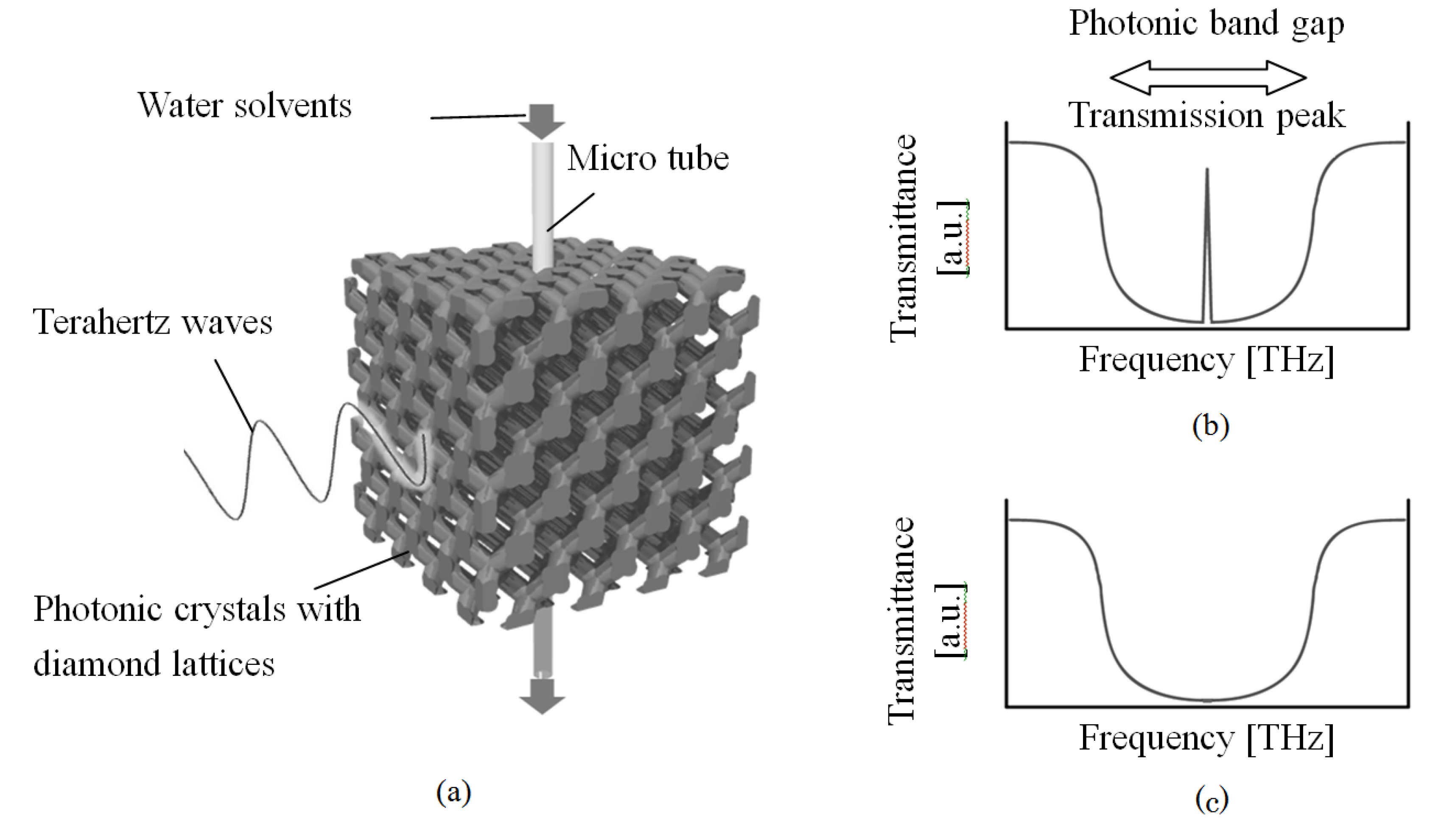
2. Experimental Section
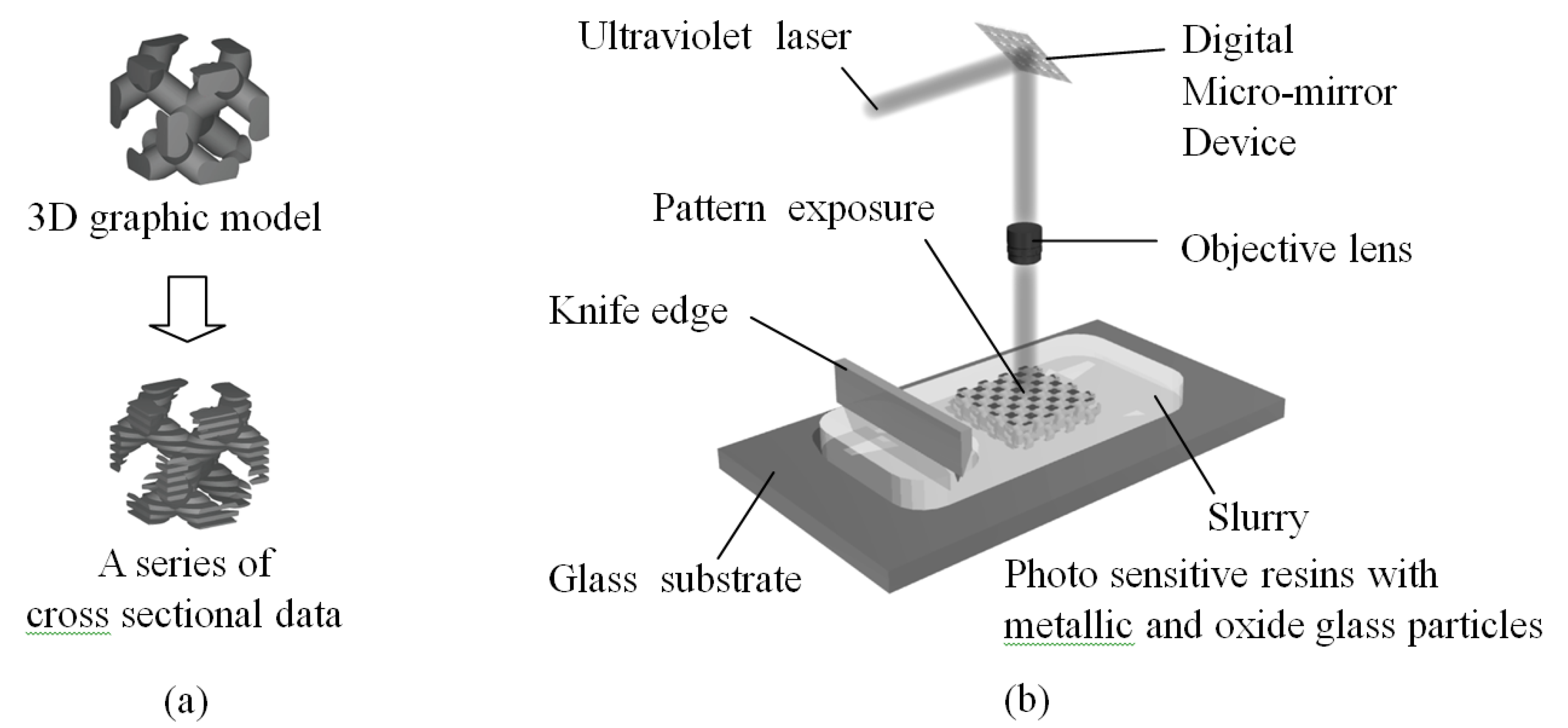

3. Results and Discussion
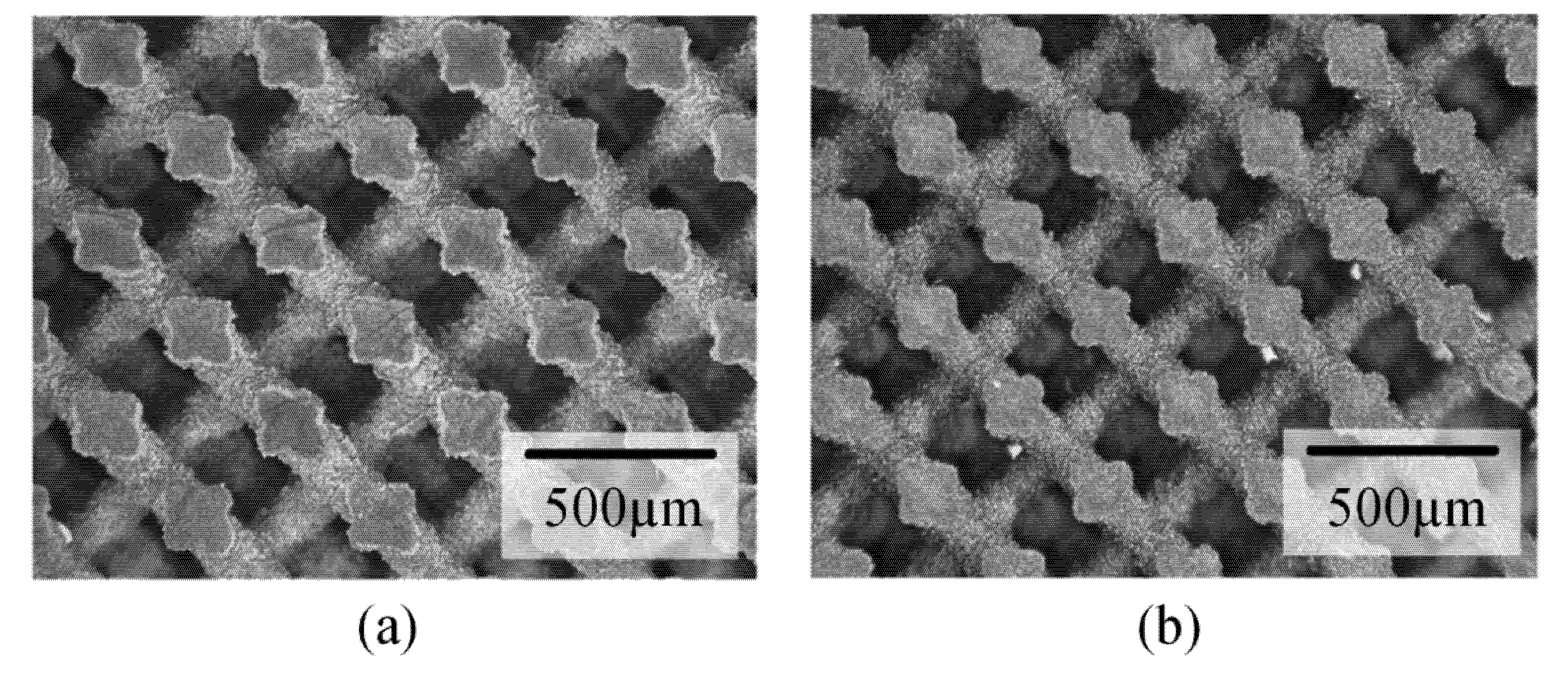
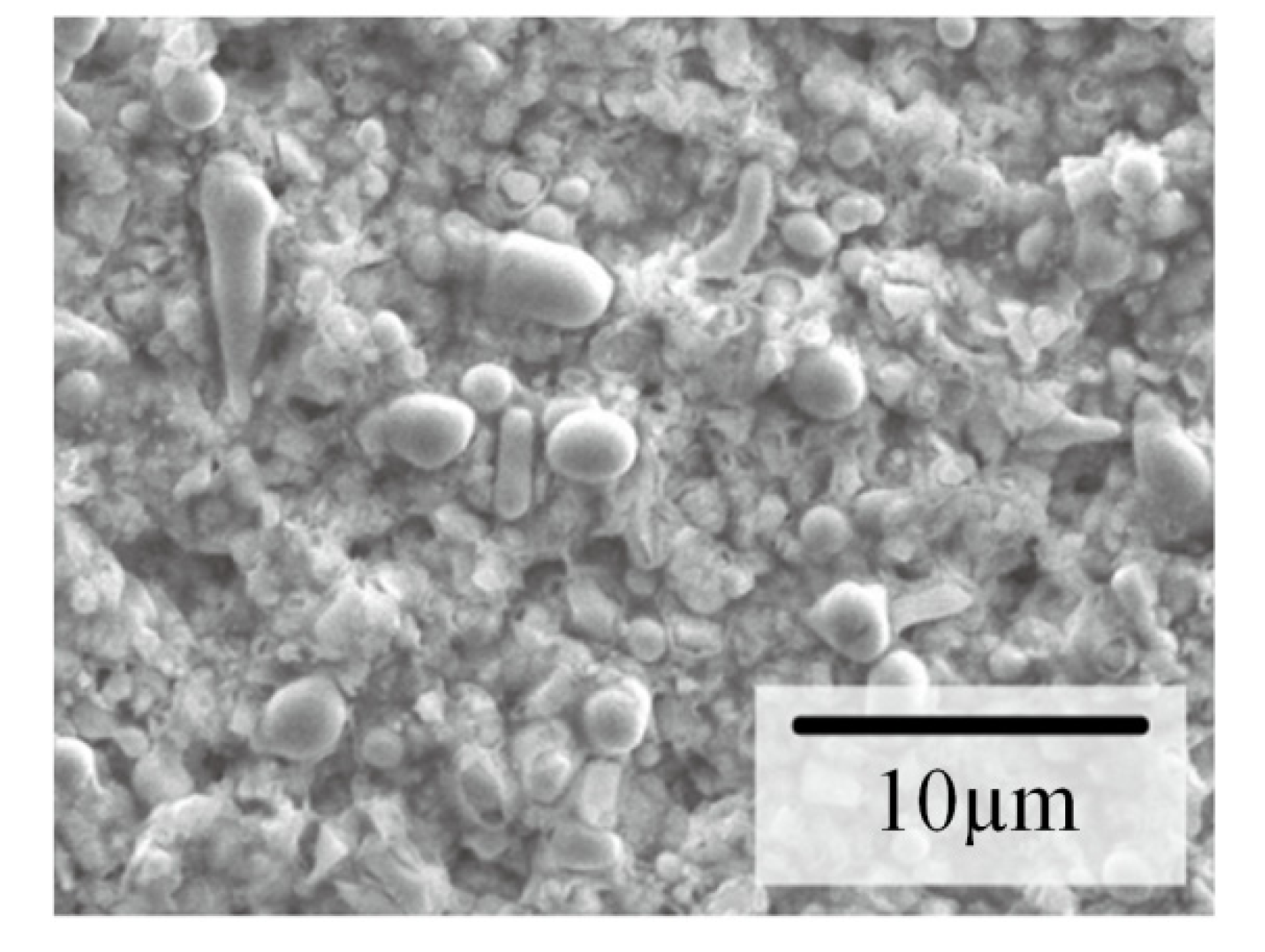



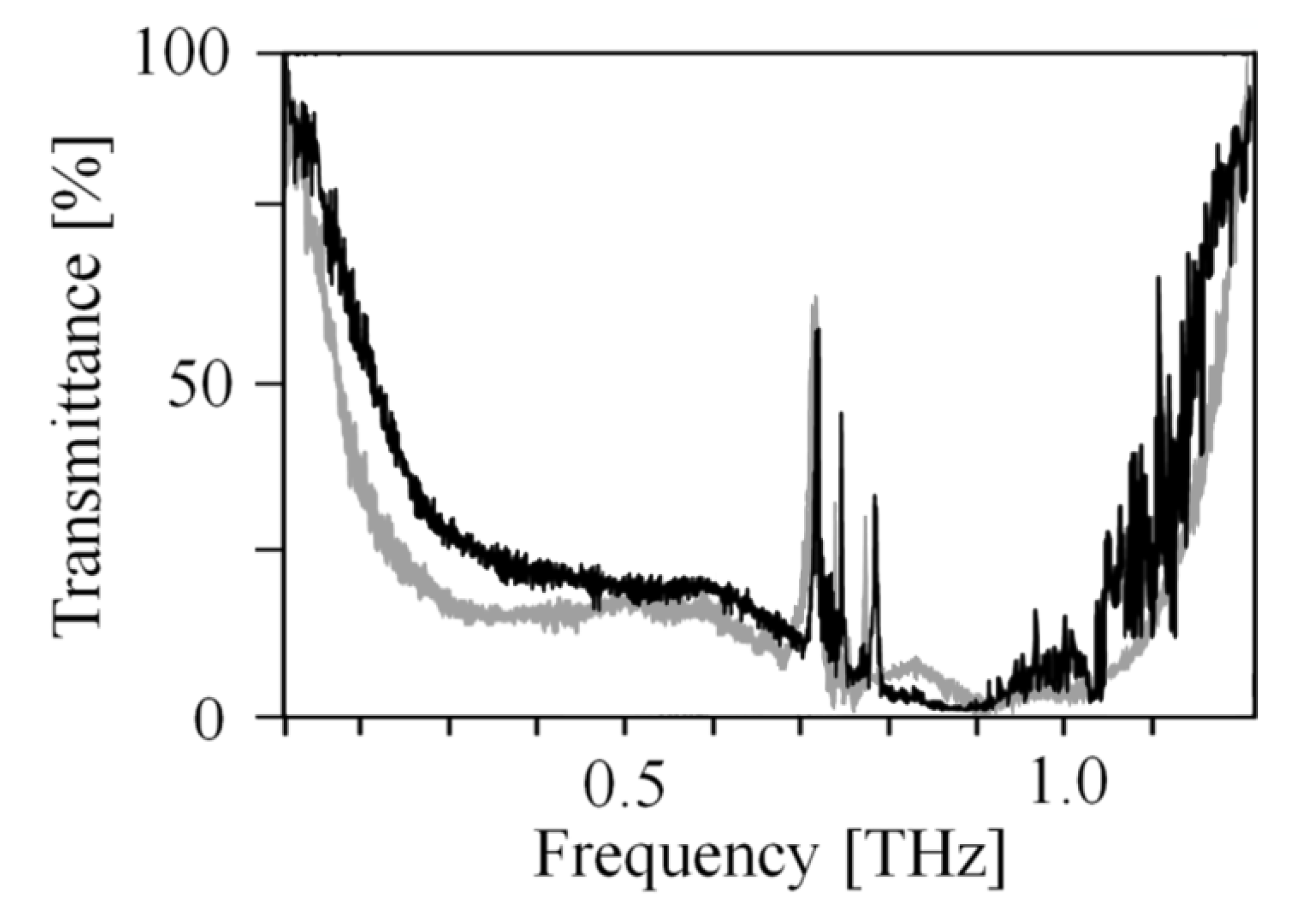
4. Conclusions
Acknowledgments
References
- Yablonobitch, E. Inhibited spontaneous emission in solid-state physics and electronics. Phys. Rev. Lett. 1987, 58, 2059–2062. [Google Scholar] [CrossRef]
- Inoue, M. Magnetophotonic crystals. J. Phys. 2006, 39, R151–R161. [Google Scholar]
- Kirihara, S.; Takinami, Y.; Tasaki, S. Fabrication of metallodielectric photonic crystals to exhibit perfect millimeter wave band gaps. Int. J. Appl. Ceram. Technol. 2012, 9, 893–901. [Google Scholar] [CrossRef]
- Kirihara, S.; Kaneko, M.; Niki, T. Terahertz wave control using ceramic photonic crystals with a diamond structure including plane defects fabricated by microstereolithography. Int. J. Appl. Ceram. Technol. 2009, 6, 41–44. [Google Scholar] [CrossRef]
- Chen, W.; Kirihara, S.; Miyamoto, Y. Three-dimensional microphotonic crystals of ZrO2 toughened Al2O3 for Terahertz wave applications. Appl. Phys. Lett. 2007, 91, 153507–153509. [Google Scholar] [CrossRef]
- Angel, S.M.; Kulp, T.J.; Vess, T.M. Remote-raman spectroscopy at intermediate ranges using low-power cw lasers. Appl. Spectrosc. 1992, 46, 1085–1091. [Google Scholar] [CrossRef]
- Wang, H.; Wang, Q. Spectrum characteristics of nitrofen by terahertz time-domai spectroscopy. Phys. Conf. Ser. 2011, 276, 012209–012214. [Google Scholar] [CrossRef]
- Kutteruf, M.R.; Brown, C.M.; Iwaki, L.K.; Campbell, M.B.; Korter, T.M.; Heilwail, E.J. Terahertz spectroscopy of short-chain polypeptides. Chem. Phys. Lett. 2003, 375, 337–343. [Google Scholar] [CrossRef]
- Makino, A. New Functional Materials, Fundamentals of Metallic Glasses and their Applications to Industry; Inoue, A., Ed.; Technosystem: Tokyo, Japan, 2009; pp. 322–345. [Google Scholar]
© 2013 by the authors; licensee MDPI, Basel, Switzerland. This article is an open-access article distributed under the terms and conditions of the Creative Commons Attribution license (http://creativecommons.org/licenses/by/3.0/).
Share and Cite
Kirihara, S.; Nakano, M. Freeform Fabrication of Magnetophotonic Crystals with Diamond Lattices of Oxide and Metallic Glasses for Terahertz Wave Control by Micro Patterning Stereolithography and Low Temperature Sintering. Micromachines 2013, 4, 149-156. https://doi.org/10.3390/mi4020149
Kirihara S, Nakano M. Freeform Fabrication of Magnetophotonic Crystals with Diamond Lattices of Oxide and Metallic Glasses for Terahertz Wave Control by Micro Patterning Stereolithography and Low Temperature Sintering. Micromachines. 2013; 4(2):149-156. https://doi.org/10.3390/mi4020149
Chicago/Turabian StyleKirihara, Soshu, and Maasa Nakano. 2013. "Freeform Fabrication of Magnetophotonic Crystals with Diamond Lattices of Oxide and Metallic Glasses for Terahertz Wave Control by Micro Patterning Stereolithography and Low Temperature Sintering" Micromachines 4, no. 2: 149-156. https://doi.org/10.3390/mi4020149




